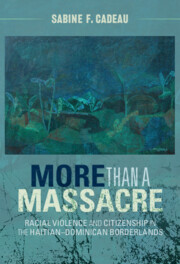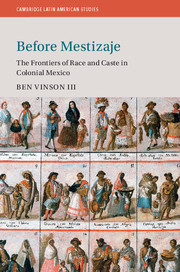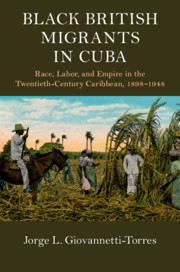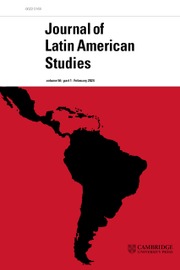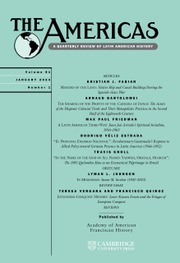More than a Massacre
More than a Massacre is a history of race, citizenship, statelessness, and genocide from the perspective of ethnic Haitians in Dominican border provinces. Sabine F. Cadeau traces a successively worsening campaign of explicitly racialized anti-Haitian repression that began in 1919 under the American Occupiers, accelerated in 1930 with the rise of Trujillo, and culminated in 1937 with the slaughter of an estimated twenty thousand civilians. Relatively unknown by contrast with contemporary events in Europe, the Haitian-Dominican experience has yet to feature in the broader literature on genocide and statelessness in the twentieth century. Bringing to light the massacre from the perspective of the ethnic Haitian victims themselves, Cadeau combines official documents with oral sources to demonstrate how ethnic Haitians interpreted their changing legal status at the border, as well as their interpretation of the massacre and its aftermath, including the ongoing killing and land conflict along the post-massacre border.
- Combines state documents with oral testimonies to trace the genocide of ethnic Haitians
- Challenges the differences in 'massacre' and 'genocide', revealing the ways in which categories of commemoration encode racial hierarchies of importance
- Compares testimonies from survivors in 1937 to those living today, highlighting the importance of memory in history
Reviews & endorsements
'Through careful archival research, deepened with remarkable interviews with survivors and their descendants, Cadeau’s More Than a Massacre powerfully illuminates and reframes our understanding of the 1937 genocide. This vital and resonant contribution insists that this story must be told, and heard, as a way both of remembering those who died and of understanding the genocide’s ongoing legacies in the present.' Laurent Dubois, author of Haiti: The Aftershocks of History
'This superbly researched and enormously insightful study provides far more than just another excellent account of the continuously interwoven relationship between inextricably conjoined bordering countries. This is an extraordinarily fine analysis of the central but insoluble contradictions between what the author defines as ‘Haitian ethnicity and Dominican nationality.’ It richly details the genesis of an antagonistic racial, ethnic and national conflict that was greatly exacerbated by the US occupation during the early twentieth century.' Franklin W. Knight, author of The Caribbean: The Genesis of a Fragmented Nationalism
'Sabine Cadeau’s compelling study expands the contours of her subject thematically, chronologically, and geopolitically. Placing the massacre within the larger frame of twentieth-century genocidal crimes, Cadeau pays homage to the victims of Trujillo’s murderous regime by foregrounding times when they fought back. More than a Massacre is a superior scholarly contribution.' Silvio A. Torres-Saillant, co-author (with Nancy Kang) of The Once and Future Muse: The Poetry and Poetics of Rhina P. Espaillat
'Sabine Cadeau’s extraordinary and harrowing study finally establishes the 1937 Dominican massacre of ethnic Haitians as a major twentieth century genocide. A most timely tour de force – required reading for those interested in questions of genocide, forced migration, human rights, and the relationship between definitions of citizenship, nationalism, and race.' Nan Elizabeth Woodruff, author of American Congo: The African American Struggle in the Delta
Product details
June 2022Adobe eBook Reader
9781108950084
0 pages
This ISBN is for an eBook version which is distributed on our behalf by a third party.
Table of Contents
- Introduction
- 1. From natives to foreigners: Executive Order 372 and the origins of denationalization
- 2. The end of the old border: Ethnic profiling, discrimination, and arrests in the Dominican border provinces, 1920–1936
- 3. Curses, scuffles, and public disturbances: Eruptions of popular racism in the premassacre border region
- 4. “They killed my entire family”: The 1937 genocide
- 5. “La campaña contra los haitianos”: Round-ups, concealment, and the plan behind the 1937 genocide
- 6. The “Dominicanization” of the border
- 7. Refugees and land conflict in the postgenocide Haitian–Dominican border region
- Epilogue: The right to have rights: Migration, race, and citizenship in the Dominican Republic
- Appendix: Photographs.

